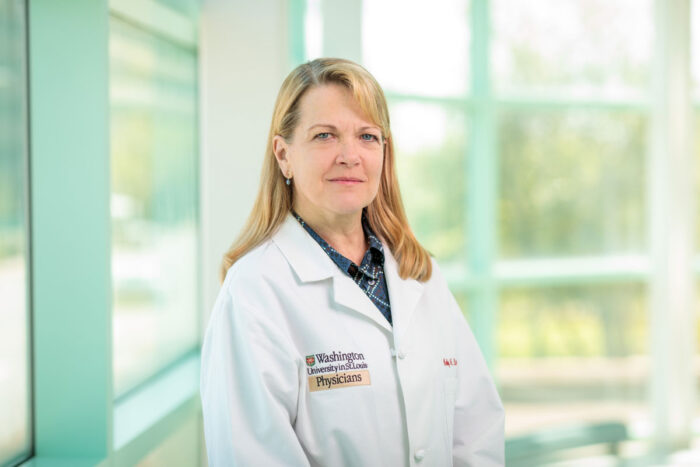Brain imaging of babies with Down syndrome focus of $11.5 million grant
School of Medicine leading multicenter study aimed at understanding brain development in babies with the condition
 Matt Miller
Matt MillerKelly N. Botteron, MD, a professor of psychiatry and of radiology at Washington University School of Medicine in St. Louis, is leading a multicenter brain-imaging study focused on infants with Down syndrome. The five-year, $11.5 million grant from the National Institutes of Health (NIH) will focus on brain development in babies with the genetic syndrome.
Researchers at Washington University School of Medicine in St. Louis have received a five-year, $11.5 million grant to lead a multicenter effort to understand how brain development in babies with Down syndrome differs from that in other babies. The effort, which involves scanning the babies’ brains using MRI, will provide a foundation that may lead to therapies to counter developmental delays in children with the condition.
The grant, from the National Institutes of Health (NIH), is part of a $77 million initiative that began in 2018 to bolster basic and clinical research focused on infants and children with Down syndrome. Most people with the genetic condition have mild to severe developmental delays, learning disabilities, and distinct facial and physical features. Some also experience heart and gastrointestinal disorders.
Each year, about 6,000 babies in the U.S. are born with the condition.
“It is astounding how sparse the research is involving neuroimaging characterization of neurodevelopment in Down syndrome, especially given that the condition is rather common,” said the study’s lead investigator, Kelly N. Botteron, MD, a Washington University professor of psychiatry and of radiology. “Brain-imaging studies in children with Down syndrome are almost nonexistent. Before we can develop and assess therapies to improve cognitive outcomes, we need to understand more about the alterations in early brain development in these children.”
Researchers will conduct behavioral and developmental testing, as well as MRI brain imaging, to examine the brain structure and cognitive function of 140 infants with Down syndrome and 70 babies without the condition. The children will be studied when they are 6 months old and, again, when they are 1 year old and then 2 years old.
The researchers also will compare the brain scans of the two groups of children with scans of autistic infants and toddlers. Such scans in autistic children have been part of a separate multicenter study co-led by Washington University.
“This will give us a large set of data to detect differences in neurodevelopmental patterns,” Botteron said. “It will be eye-opening because there are some developmental characteristics that are unique to children with Down syndrome. They tend to have more motor and coordination delays, in addition to language delays. This information is critical to developing potential innovative treatment trials including additional physical therapy, applied behavior analyses, novel drugs and potential genetic editing techniques to improve both the quality of life and overall health of people with Down syndrome.”
The infants will undergo MRI scans, generally in the evening after they fall asleep naturally, nixing the need for anesthesia. The researchers have developed strategies for scanning the brains of babies, based on MRI, without disturbing infants’ sleep.
“Over the past 10 to 15 years, we’ve learned a lot about conducting brain imaging on infants and children with autism and healthy comparison controls,” Botteron said.
One tactic is to introduce the babies beforehand to noise they can expect to hear from the MRI machine. “It’s important to prepare the babies and toddlers,” she said. “This means making them comfortable and scanning them at night while they’re naturally sleeping.”
The study’s other participants include researchers from the University of Washington in Seattle; Children’s Hospital of Philadelphia; University of North Carolina; University of Minnesota; New York University; and the Montreal Neurological Institute in Canada.






